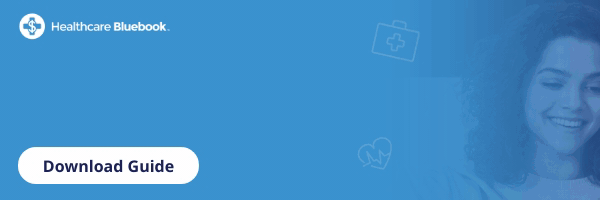 Since the COVID-19 pandemic, people have become more involved in their health. In a recent survey, 77 percent of people stated that the pandemic caused them to pay more attention to their health.
Since the COVID-19 pandemic, people have become more involved in their health. In a recent survey, 77 percent of people stated that the pandemic caused them to pay more attention to their health.
However, even though people are paying more attention to their health, it doesn’t mean they have access to accurate information on cost and quality, which can hinder their ability to make value-based choices.
Transparency in healthcare is key to improving health equity, addressing disparities, and empowering patients to make informed decisions. Additionally, complete and accurate information about costs can help healthcare facilities operate more efficiently. Below, we explore how transparency in healthcare can guide patients’ decisions.
How Can Transparency in Healthcare Guide Decisions?
Transparency in healthcare has been a concept in the health market for more than 20 years. However, it wasn’t a mandate until the Transparency in Coverage requirements were enacted in 2022.
The Final Rule (CMS-9915-F), which went into effect January 1, 2024, requires health insurers and self-insured health plans to disclose pricing and cost-sharing information for drugs, procedures, medical equipment, and any other necessary services or items. So what happens next? How can all of these new rules guide healthcare decisions?
Access to Information
Let’s be honest—healthcare is complex. And when there’s an overload of information, it can be difficult for patients to discern where to start and what’s truly accurate. These challenges might cause them to stick with what they know, potentially leading to poor healthcare choices.
However, with healthcare transparency tools that are simple to use and provide easy-to-understand information on cost and quality, patients can access data that enables them to make informed decisions. This can lead to them making different healthcare choices, such as having a procedure at an outpatient versus inpatient facility.
Health Literacy
People with low health literacy skills are likely to skip preventive services, make medication errors, struggle with managing chronic conditions, and have poor health outcomes. Addressing health literacy is essential to helping people easily locate and understand health information and make informed decisions.
For example, 60 percent of people are more likely to choose a provider when that provider offers price comparisons to the local market. However, 75 percent of people surveyed by Harvard stated they didn’t know where to find these comparisons.
To address this, it’s essential to ensure people can easily access the information they need. Easy-to-use transparency tools with member concierges who can guide patients through their healthcare journey can help patients choose high-value care while improving their health literacy.
Cost and Quality Transparency
It’s common for patients to receive medical care without knowing the provider’s cost or quality or to forego care entirely. Unless patients shop around for their care, they may end up paying prices that vary up to 600 percent between providers within the same market. And, as a result, they may choose a higher-cost or lower-quality provider.
Knowing the quality and cost of medical services and procedures in advance enables patients to make financial decisions based on their budget and insurance coverage while still receiving the care they need. This also helps prevent surprise medical bills and empowers patients to understand and anticipate the financial aspects of their healthcare.
Many people may not realize that transparent information about a provider’s or facility’s quality is available to them or where to find it. However, having cost and quality information easily available in one place can help patients determine the appropriateness of care and lower their health risks later in life, leading to better overall health.
How Healthcare Bluebook’s Solutions Can Guide Users
Healthcare Bluebook introduced the concept of transparency in healthcare 20 years ago and was founded on the principles of access to information on the quality and cost of healthcare. We’re not strangers to transparency in healthcare, so we have several cost and quality tools based on our extensive experience in healthcare transparency.
Tools such as our color-coded digital solution and Bluebook CareConnect™ guide users to high-quality, lower-cost healthcare, reducing overall spend. Our color-coded solution makes it easy to find high-quality physicians who deliver care at a Fair Price. Members can search by a facility, procedure, or physician to find the best care for their needs.
For more hands-on assistance with choosing a high-value provider, CareConnect provides personalized assistance through a member concierge, who guides the member throughout their care journey, from scheduling care to transferring medical records and beyond.
What to Consider with Healthcare Transparency Tools
Tools that help employees navigate their healthcare by providing transparent cost and quality information are essential, but what features should you look for in these solutions? Find out what features you should consider and how to determine if the solution you choose will help you save money with our guide, How to Choose a Healthcare Navigation Solution That's Right for Your Organization: Four Questions to Ask.

